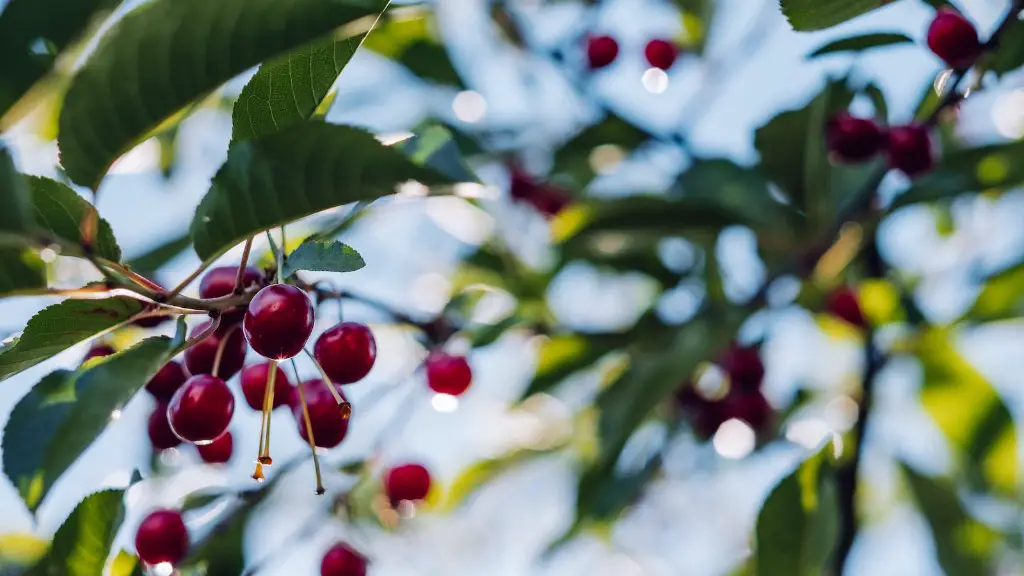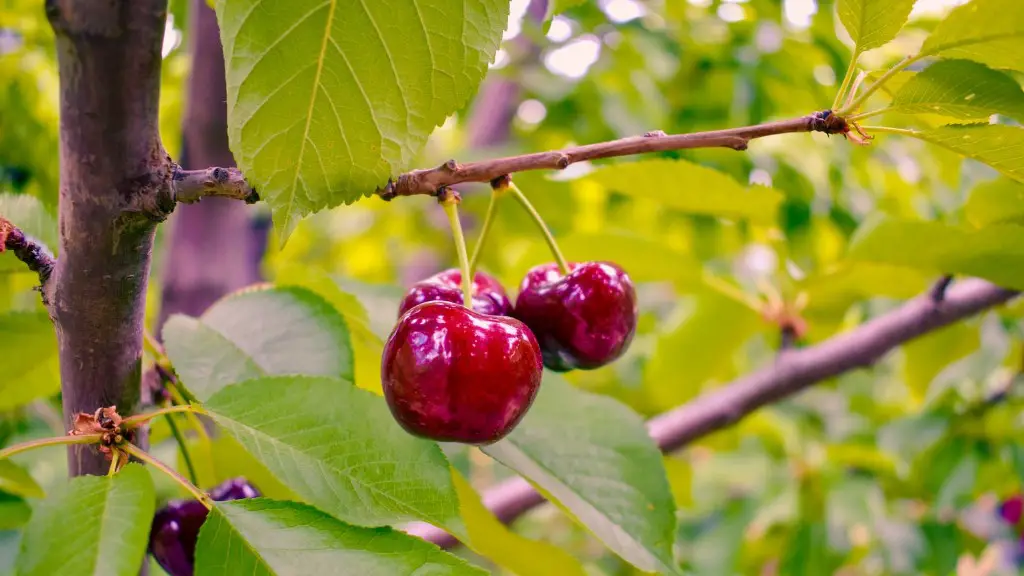Introduction
One of the most popular methods of increasing fruit yields and ensuring a harvest year after year is grafting. Grafting is an ancient technique that has been used to propagate desired growth characteristics, such as disease resistance and enhanced production, onto a living tree. In this article we will explore the steps required to successfully graft cherry trees, including the types of grafts that can be used and the best time of year to graft a cherry tree.
Types of Grafts
The most popular type of graft for cherry trees is the cleft graft, or the whip and tongue graft. Cleft grafting involves cutting the tree into two equal halves and inserting the scion into the cut. The whip and tongue graft is similar, except the cut is made into a V-shape, with a tongue or lip formed at the bottom of the V. This tongue helps to hold the scion in place and improve the chances of a successful graft.
Other types of grafts that can be used on cherry trees include veneer grafts and bridge grafts. Veneer grafts are similar to cleft grafts but instead of cutting the tree in two halves, the scion is inserted in between two adjacent layers of bark. Bridge grafts are created when the graft is taken from a living tree and planted on a dead tree. This helps to bring life back to the tree.
Selecting Scion Material
Scion material is selected based on the desired characteristics that are sought in the grafted tree. For cherry trees, it is important to select an appropriate scion that is compatible with the rootstock and will produce a strong and healthy union between the two. Ideally, the scion should be taken from a tree that is the same size and has similar characteristics to the tree the scion is being grafted onto.
When selecting a scion, it is crucial to evaluate each graft carefully. Grafts that appear weak or unhealthy should be avoided. It is also important to look for signs of disease or pests on the scion, as these can be easily spread to the rootstock.
Best Time for Grafting
Cherry trees should only be grafted during the early spring, when the tree is dormant and temperatures are still cool. During this time, buds on the scion are not yet open and the tree is still in a resting phase. This minimizes the amount of stress on the rootstock and increases the chances of successful grafting.
Grafting during the heat of the summer months can be problematic as the scion may be too mature and the tree could experience premature leaf drop or other stress symptoms.
Grafting Right
When it comes to successful grafting, it is important to ensure the cut is clean and smooth. Any bumps or imperfections in the cut can result in the scion not making a strong union with the rootstock and can even cause eventual death of the scion. The scion should also be firmly attached to the rootstock with none of the growing medium exposed.
Getting the Right Care
Once the graft has been completed, it is important to ensure the newly grafted tree receives proper care and attention. Fertilizer, water and adequate amounts of sunlight will help the grafting to take, allowing for a stronger and healthier cherry tree.
Pruning the tree back as it grows will help to promote strong growth and a strong union between the scion and rootstock. Removing any dead, diseased or damaged branches will also help to keep the tree healthy.
Aftercare
Once the cherry tree has been grafted and has been given time to take, it is important to monitor the tree for signs of stress or disease. It is also important to check the graft union to make sure it is secure. If needed, the scion can be wound with parafilm tape to help keep the bark secure and strengthen the union.
Protecting the Tree
It is important to take measures to protect the newly grafted tree from pests and disease. Pesticides and fungicides can be used regularly to prevent any potential risks and to promote a healthy tree. Additionally, if the tree experiences any damage or stress, it is important to take appropriate steps to repair the damage and promote a successful grafting.
Pruning and Training
Once the cherry tree has successfully been grafted and is in a healthy state, it is important to prune and train the tree to ensure a productive harvest and healthy growth. Pruning the tree back and training the branches in the desired formation will help to promote strong growth and enhance the fruit production.
Fruit Production and Pollination
After the grafted cherry tree is established, it is important to ensure the tree is adequately pollinated for successful fruit production. If the tree is self-fertile, it is important to ensure there are adequate plants nearby for cross-pollination. Cherry trees that are not self-fertile will require nearby pollinators to ensure a good crop.
Soil Preparation
In order to ensure a successful grafted cherry tree, it is important to provide adequate soil preparation. This includes adding organic matter to the soil and ensuring there is adequate drainage. Additionally, the soil should be tested to determine the ideal PH and fertilizer needs of the tree.
Conclusion
Grafting cherry trees is a great way to propagate desired characteristics and ensure a successful harvest. Selecting the right scion material, preparing the soil and providing proper care and attention are all important steps in achieving a successful graft. Grafting cherry trees is a rewarding endeavor, with the proper care and dedication, the tree can produce a bountiful harvest in no time.


